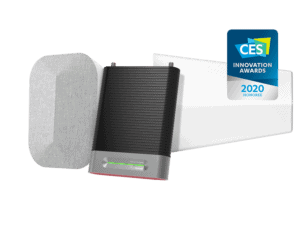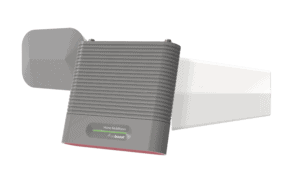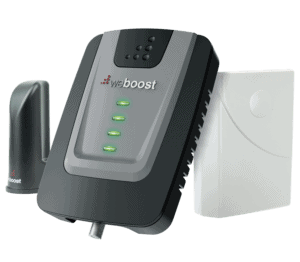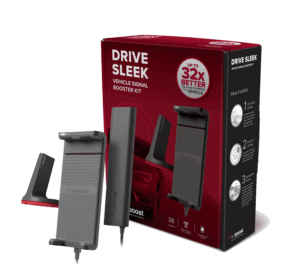Blog
How to Stop Buffering: Faster Video Streaming on Your Phone
January 13, 2023 — by MEREDITH POND
SHARE ARTICLE[Sassy_Social_Share total_shares="ON"]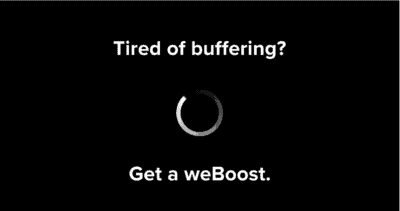
If you enjoy the convenience of watching your favorite movies, TV shows, and videos on your smartphone, you’re not alone. In fact, nearly 70 percent of the digital video content audience in the United States is reported to watch videos on their smartphones. But if you’re part of this ever-growing audience, you’ve probably wondered how to stop buffering.
Unfortunately, watching videos on your mobile phone isn’t always seamless. Buffering can cause frustrating delays, causing you to miss a punchline, dunk, or Hail Mary pass. So, why do videos buffer? In this article, we’ll explain this phenomenon and how to stop buffering for faster video streaming on your iPhone or Android.
Why do my videos keep buffering on my iPhone or Android?
Streaming service providers such as Netflix, Hulu, and Paramount+ deliver great content to smartphones, computers, and tablets for viewer consumption (not to mention your home TV). At times, however, the video may buffer, especially if you’re not on WiFi.
For example, if you’re watching a movie during peak viewing times between 7 pm to 11 pm, the increased traffic during these busy periods can cause lagging speeds.
If you’re experiencing video streaming problems, you may wonder how to stop buffering and the inconvenient delays it causes. To minimize buffering on your phone, here are a few suggestions:
- Watch videos during off-peak times to avoid bottlenecks.
- If possible, download the entire video to your device before playing it.
- Reduce the quality of the video, decreasing bandwidth usage.
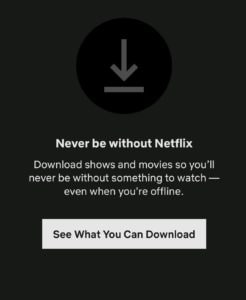
Slow video streaming on your phone could also be caused by issues beyond your control; for example, your relative distance from surrounding cell towers. Generally, the closer you are to a cell tower, the better your cell phone signal is likely to be.
However, other obstacles can interfere with your cell reception, such as building materials like concrete, metal, energy-efficient glass, and foam insulation, used in the construction of your home or office building. While these factors may obstruct signal, there are steps you can take to reduce or stop buffering on your phone.
How to stop buffering on iPhone
Before you troubleshoot a buffering problem, check your internet speed or bandwidth. Video streaming requires a robust internet connection with plenty of bandwidth, and streaming higher quality video requires even more bandwidth. For example, to stream in HD, your connection should be at least 5 megabits per second (Mbps). The higher the Mbps speed, the faster your internet will be.
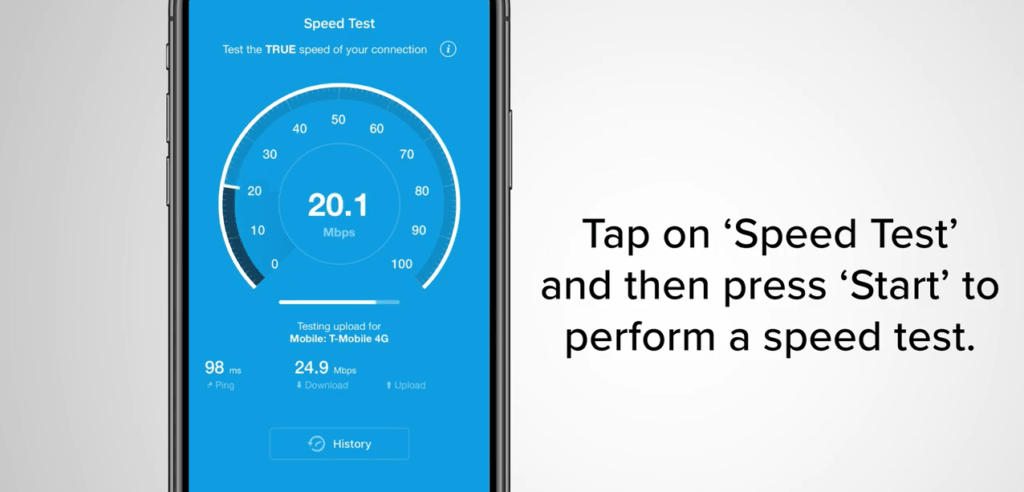
Netflix recommends the following Mbps for streaming content:
- 5 Mbps – minimum required broadband connection speed
- 5 Mbps – recommended broadband connection speed
- 0 Mbps – recommended for SD quality
- 0 Mbps – recommended for HD quality
- 25 Mbps – recommended for Ultra HD quality
After checking your internet speed, there are other steps you can take to fix buffering streaming video problems on your iPhone.
- Install software updates. Keeping your software up to date ensures your iPhone will run more efficiently. To check for updates manually, go to Settings > General > Software Update. On the screen, you’ll see whether your iOS is up to date or if new software is available to install. You can also turn on Automatic Updates for overnight updates. (Note that the location of any settings may change with ongoing software updates.)
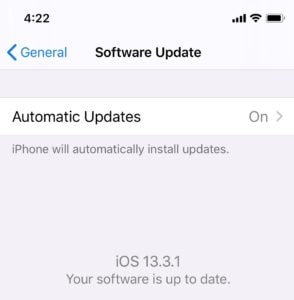
- Close background apps. On your iPhone, you can close applications that are running in the background and slowing your device. From the home screen display, press the home key twice to view recent applications. Swipe each app upward to close it. Press the home key once to return to the home screen.
- Clear browser history. Clearing your browser history and cache deletes saved data that is affecting your video streaming. On your iPhone, go to Settings > Safari > Clear History and Website Data. This step removes your history, cookies, and browsing data that slows your streaming capabilities.
How to stop buffering on Android
If you’re an Android user, here are a few recommendations to improve video streaming on your phone:
- Install software updates. When your Android is running slowly, check to see if a software update is available. Go to Settings > About Device or About Phone (depending on your device) > Software Update or System Update (depending on the OS). On the screen, follow the prompts to complete the new software installation. (Note that the location of any settings may change with ongoing software updates.)
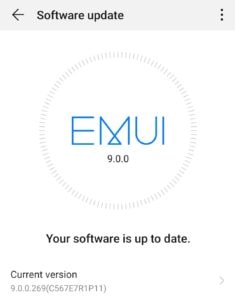
- Disconnect other devices. Video streaming may be lagging on your Android because other devices are hogging network bandwidth. Disconnect smartphones, laptops, tablets, and other smart devices that are not in use. You’ll experience faster speeds on your Android phone when your WiFi isn’t overloaded.
- Uninstall unused apps. Unwanted applications on your Android can slow video streaming. Check your list of apps and delete or uninstall the apps you don’t use. Over time, your phone also collects cached files and data you don’t need, so it’s a good idea to clear browser history and cache periodically to improve your video streaming quality.
How to stop buffering for faster streaming with a cell phone signal booster
As outlined above, there may be several reasons why your video keeps buffering and why you’re getting poor cell signal on your phone. If you’ve tried the above-mentioned strategies to improve streaming capabilities but are still experiencing lagging speeds and buffering, you may want to consider purchasing a weBoost cell phone signal booster.
Whether you need a solution for your home, vehicle or RV, or business, weBoost cell phone signal boosters work with all cellular devices, networks, and carriers to ensure you always have a reliable cellular connection. Plus, they work for every device in the coverage area at the same time, so your entire family can benefit.
Home signal boosters for iPhone and Android
Depending on the size of your home and your specific needs, weBoost offers different multi-user boosters, or amplifiers, that improve video streaming for iPhone and Android users while on the cellular network; regardless of the carrier or service provider:
- weBoost Installed | Home Complete is weBoost’s most powerful in-home cell signal booster for large homes. *Installation Included*
- Home MultiRoom improves cell signal in medium-sized homes for approximately three large rooms or up to 5,000 square feet.
- Home Room is designed for smaller homes and apartments, providing coverage for 1 room, or up to 1,500 square feet.
Vehicle signal boosters for iPhone and Android
weBoost also offers in-vehicle cell signal boosters to improve cellular connectivity in your car, truck, or SUV when you’re on the go. Here are just a few of your options.
- Drive Reach is our most powerful cell signal booster that delivers the strongest possible cell coverage while on the road, especially in remote areas where signal is weak. It’s ideal for passenger cars and SUVs.
- Drive Reach Overland is the first cell phone booster designed for overlanders, by overlanders. It delivers the strongest boost allowed by the FCC and even has a folding antenna mount so you can clear obstructions and stow the antenna when not in use.

- Drive Sleek is a single-user, in-vehicle cell signal booster with an adjustable cradle design that can hold almost any size cell phone.
Want to know how to stop buffering for good? Take our advice for faster, uninterrupted video streaming on your smartphone. Shop weBoost’s full selection of cell phone signal boosters today.
buttonbutton SHARE ARTICLE[Sassy_Social_Share total_shares="ON"]TAGS: cell phone booster, How To

